Cloud Pesticide Platforms for Greenhouses: Guide
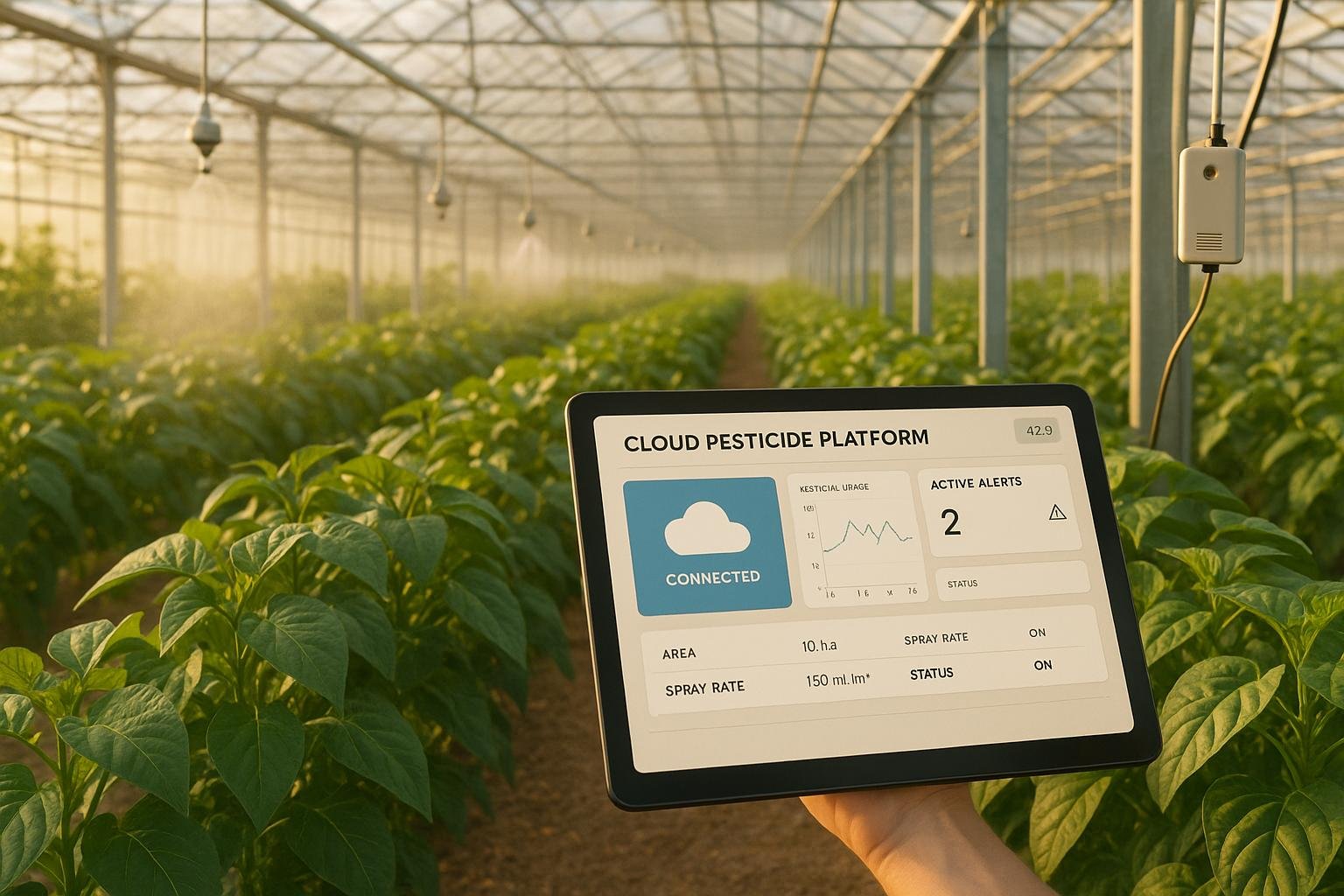
Want to manage pests faster and cut costs in your greenhouse? Cloud pesticide platforms are transforming pest control with real-time data, AI-driven insights, and automated actions. Here's what you need to know:
- Faster Response: Reduce pest treatment time from 7–10 days to just 2–3 days.
- Cost Savings: Cut pesticide use by up to 75% and lower IPM costs by 25%.
- Precision Control: Target pests more accurately, protecting crops and reducing chemical use.
- Remote Access: Monitor greenhouse conditions and manage treatments from anywhere.
- Automation: Use smart sprayers to apply pesticides efficiently and reduce waste.
These platforms combine sensors, IoT connectivity, and AI to provide real-time pest management solutions. They’re perfect for growers looking to save time, reduce costs, and improve crop health.
Quick Comparison of Benefits and Challenges:
| Benefits | Challenges |
|---|---|
| Faster decision-making | Connectivity issues in rural areas |
| Reduced pesticide usage | High initial setup costs |
| Improved crop yields | Cybersecurity risks |
| Enhanced team collaboration | Technical expertise required |
Cloud pesticide platforms are reshaping pest control for greenhouses. Ready to make the switch? Let’s dive into the details.
Organic Integrated Pest Management in a Greenhouse

Core Components of Cloud-Based Pesticide Platforms
Getting familiar with the main elements of cloud-based pesticide platforms can help greenhouse operators make smarter choices when adopting these systems. These platforms rely on three key components that work together to provide an efficient pest management solution. Together, they deliver real-time, data-driven pest control, laying the groundwork for practical applications discussed in the next section.
Monitoring Sensors for Environment and Pests
At the core of cloud pesticide platforms are environmental sensors. These devices continuously monitor critical greenhouse conditions like temperature (°F), humidity, light intensity, CO₂ levels, soil moisture, wind, and precipitation. Temperature and humidity sensors are particularly crucial since pest activity is often tied to these variables. Soil moisture sensors also play a role by identifying areas of overwatering, which can create breeding grounds for pests. The data collected by these sensors directly informs decision-making in controlled environments.
"The collection of accurate greenhouse data through reliable technological solutions is the first step to achieving perfect growing conditions for your crop." – Priva [5]
When choosing sensors, operators have options between wired and wireless types. Wired sensors offer reliable data transfer, while wireless ones are better suited for hard-to-reach areas [6]. Additionally, the choice between autonomous devices and programmable controllers depends on the level of automation required. Autonomous devices manage simpler tasks, whereas programmable controllers handle more advanced, sensor-driven operations [6].
IoT Connectivity and Real-Time Data Access
IoT connectivity turns individual sensors into a cohesive monitoring network by enabling real-time data transfer to cloud platforms. This connectivity allows operators to remotely monitor greenhouse conditions. With the introduction of 5G, data transfer speeds are up to 100 times faster than 4G, making it easier to respond quickly to emerging pest issues [7].
For example, systems like Rentokil's PestConnect use infrared sensors to monitor facilities and send real-time alerts, enabling rapid responses from field technicians [4]. However, implementing IoT in smart farm environments requires careful planning. Devices often share the 5G spectrum, which can lead to interference and disrupt system reliability [8]. Proper network design and device setup are critical to ensuring consistent data flow.
While IoT ensures data is continuously available, AI takes this information and turns it into actionable strategies.
AI-Driven Analysis and Recommendations
AI plays a transformative role by analyzing data from sensors, satellites, and drones to create actionable pest management plans [13]. AI-powered pest detection systems can identify over 90% of common crop pests, with image recognition tools achieving 70% to 98% accuracy in identifying insects using integrated camera and microphone data [12].
Real-world examples highlight AI's effectiveness. In India, agritech startups are using drones and AI to monitor pest outbreaks in rice and cotton fields, cutting pesticide usage by more than 30% [11]. Another example is the collaboration between Semios and Google, which reduced a moth population by 1.5 billion while boosting almond production [9]. Similarly, FarmSense’s pest-monitoring platform collects insect and environmental data to recommend targeted strategies, such as optimizing the timing for treatments like navel orangeworm spraying [9].
AI also excels in predictive modeling by combining weather patterns, farming cycles, and pest life cycles. For instance, the Tamil Nadu Agricultural University created an Android app using deep convolutional neural networks to detect fall armyworm infestations, achieving a validation accuracy of 93.47% [10].
Pests are responsible for about US$220 billion in agricultural damage annually [4], and the FAO estimates they cause 20–40% of crop losses globally, amounting to US$290 billion [14]. By enabling precise, timely interventions, AI-driven pest management offers greenhouse operators a powerful tool to reduce losses and improve efficiency. This aligns with the broader goal of delivering effective and efficient pest control solutions in greenhouses.
How Cloud Pesticide Platforms Work in Practice
Cloud pesticide platforms bring together sensors, connectivity, and automation to create an efficient pest management system. By breaking the process into three key steps - data collection, AI-driven analysis, and automated application - these platforms transform how pest control operates in greenhouses. Here's a closer look at how they work in real-world settings.
Data Collection and Aggregation
The process begins with gathering data from various sources across the greenhouse. Environmental sensors monitor conditions like temperature, humidity, and light. This information is then transmitted through IoT networks to cloud platforms, where it’s formatted and stored in a standardized way for further analysis [3][16][17].
But the data collection doesn’t stop at basic monitoring. Companies like Netafim and AeroFarms use real-time sensor data not only to manage irrigation but also to fine-tune environmental controls. This approach can cut water usage by up to 95% compared to traditional methods [3].
The success of this step hinges on seamless integration. IoT devices must communicate reliably with the cloud, and data from different sources needs to be consistent. This unified dataset is essential for the next stage, where AI takes the lead.
AI Analysis and Decision-Making
Once the data is uploaded, AI algorithms analyze it to generate pest management strategies. The system examines patterns in environmental conditions, pest activity, and historical treatment outcomes to predict threats and recommend targeted actions.
"The ultimate goal is to provide our farmers with cloud-service based monitoring, modeling and decision-making tools for their farm health and production management, so their applied resources are site-specific, dynamic and optimal, leading to precise and sustainable agriculture." - Ratnesh Kumar, Professor of Electrical and Computer Engineering, Iowa State University [15]
The AI doesn’t just look at one factor - it evaluates multiple variables simultaneously. It compares current conditions to pest development thresholds, considers weather patterns that may influence pest behavior, and reviews the success of past treatments in similar scenarios. This thorough analysis allows the system to recommend specific pesticides, application timings, and concentrations.
FarmSense is a great example of this in action. Their pest-monitoring platform collects data on insects and environmental conditions, then uses AI to tailor recommendations based on each grower’s unique situation - whether it’s the type of crops, local weather, or terrain [9].
Once the AI has finalized its recommendations, the system transitions smoothly to the next step: putting those strategies into action.
Automated Pesticide Application
The final stage involves translating AI insights into precise, automated actions. Smart sprayers and actuators receive instructions from the cloud and execute them with remarkable accuracy. This ensures treatments are applied at the right time, even if greenhouse staff aren’t on-site.
Smart spraying technology delivers impressive results. For instance, these systems can cut pesticide usage by over 50% while reducing spray drift by up to 87% and ground spray loss by as much as 93% [18].
Blue River Technology’s See & Spray system is a standout example. Using deep learning and computer vision, it identifies and targets weeds, reducing herbicide use to less than one-tenth of traditional methods [18]. Similarly, Bosch’s Smart Spraying solution uses cameras and AI to detect and treat pests within just 300 milliseconds, leaving unaffected areas untouched [18].
Another example is Smart Apply’s Intelligent Spray Control System, designed for orchards and vineyards. This system not only automates spraying but also collects data during the process, storing it in the cloud. Growers can then analyze this data to improve future pest control strategies and better understand their operation’s efficiency and sustainability [18].
These automated systems also include safety features and manual override options, giving operators the ability to step in if needed. This balance between automation and human oversight ensures that pest control remains effective while allowing for flexibility in unexpected situations.
sbb-itb-4d6a8dd
🚀 Ready to Reinvent Your Garden?
Join thousands of homeowners who have transformed their gardens using our AI design tool. Upload one photo to explore endless possibilities.
Get your AI garden designs →Benefits and Challenges of Cloud Pesticide Platforms
Building on the technical details discussed earlier, it's important to weigh both the advantages and challenges of using cloud pesticide platforms. This balanced perspective helps growers decide if these systems align with their operational goals.
Key Benefits of Cloud Pesticide Systems
Cloud-based pesticide platforms bring several benefits to greenhouse operations, especially when it comes to faster decision-making and improved teamwork. These systems can help growers address pest issues within 2-3 days, reducing the risk of pest spread and minimizing crop damage.
By integrating AI and sensors, these platforms provide detailed data that helps growers make informed decisions. Instead of depending solely on traditional methods like visual inspections, growers can use high-resolution data to identify patterns and spot threats early. Guido van het Hof, Head Grower at Great Northern Hydroponics, explains:
"ecoation enhances our abilities by giving us more higher resolution data to make better real-time decisions." [1]
Another major plus is cost efficiency. A documented 25% reduction in Integrated Pest Management (IPM) costs can lead to significant savings, especially for larger facilities. Add to that the reduced chemical usage and improved crop yields from faster responses, and the financial benefits become even more compelling.
These platforms also excel in fostering collaboration. Data can be shared in real time, allowing team members and external experts to analyze and contribute to pest management strategies, even if they aren't physically present in the greenhouse [2].
Potential Challenges and Considerations
While the benefits are clear, there are challenges that could impact the adoption and success of cloud pesticide platforms.
One major hurdle is connectivity. Many rural areas, where greenhouses are often located, suffer from unreliable internet access. This can disrupt the real-time data flow that these platforms rely on [17][21]. Without stable connectivity, growers may not be able to fully utilize the system when it's needed most.
Cybersecurity is another concern. Recent incidents have shown the vulnerability of cloud-based systems to cyberattacks [20]. Beyond hacking risks, the use of third-party cloud providers raises questions about the privacy of sensitive agricultural data, such as growing practices and yield information [17][20].
The initial costs and technical expertise required for implementation can also be barriers, particularly for smaller operations [17][19][21]. With the average U.S. farmer being 57.5 years old, additional training and support may be necessary to ensure effective use of the technology [21].
Comparison of Benefits and Challenges
Deciding whether to adopt cloud pesticide platforms often comes down to balancing the benefits with the potential hurdles.
| Benefits | Challenges |
|---|---|
| 75% reduction in pesticide usage | Connectivity issues in rural areas |
| 25% reduction in IPM costs | Cybersecurity and data privacy risks |
| 5x faster response time | High technical expertise requirements |
| Real-time data for better decisions | Expensive upfront costs |
| Enhanced collaboration among teams | Dependence on third-party providers |
| Improved crop yields | Risk of system downtime |
For larger commercial greenhouses with reliable internet and technical support, the advantages tend to outweigh the challenges. However, smaller operations or those in areas with poor connectivity may need to address infrastructure gaps before fully benefiting from these platforms.
Preparation is key to success. Ensuring stable internet access, implementing strong cybersecurity measures, training staff, and having contingency plans for outages are all essential steps for effective adoption. By addressing these factors, growers can maximize the potential of cloud pesticide platforms in their operations.
Best Practices for Implementing Cloud Pesticide Platforms
Implementing cloud pesticide platforms effectively requires careful planning and attention to detail. Transitioning from traditional pest management methods to a cloud-based system involves multiple interconnected elements. Setting up the right foundation early on can mean the difference between streamlining operations or facing unnecessary complications.
Assess Greenhouse Infrastructure
Before rolling out a cloud pesticide platform, it's essential to evaluate whether your greenhouse can accommodate the technology. Focus on three key areas: sensor compatibility, network connectivity, and equipment integration.
Start by inspecting your sensors and their compatibility with the platform. If they don’t meet the requirements, consider upgrading them. Keep in mind that the physical state of your greenhouse - both inside and out - can influence the performance of wireless systems, so factor this into your planning [22].
Next, test your internet speed and reliability throughout the facility. Weak signals or dead zones can disrupt the real-time data flow that these platforms depend on. If you encounter connectivity issues, installing Wi-Fi boosters or setting up a mesh network can help ensure consistent signal coverage.
Finally, review your current equipment - such as irrigation systems, climate control units, and application devices - to confirm they can integrate with the new platform. Documenting models and specifications will make it easier to verify compatibility. Additionally, consider the microclimate conditions in your greenhouse, including the design and materials used for coverings, as these factors can influence system performance [22].
Once the infrastructure is ready, the next step is equipping your team with the knowledge and skills to operate the platform effectively.
Staff Training and System Management
Training your team is crucial to ensuring a smooth transition to cloud-based pest management. Every greenhouse employee and contractor should undergo thorough training [25], which should cover system operation, data interpretation, and how to apply AI-generated recommendations in daily tasks.
Provide your team with essential pest identification tools like magnifying lenses, flags, guides, and detailed maps [23]. Use these maps to divide the greenhouse into segments, creating a standardized way to communicate pest and crop information across the team [23]. Training should also include methods for identifying pests at all life stages [23].
As technology evolves, keep your training programs up to date. Host regular sessions with industry experts to share the latest insights and refine your processes [24]. Additionally, establish clear protocols for responding to system alerts, analyzing data reports, and escalating issues when needed [25].
With a well-trained team and standardized procedures in place, focus on maintaining the platform and protecting it from digital threats.
Regular Maintenance and Cybersecurity
Ensuring the long-term success of your cloud pesticide platform requires ongoing maintenance and robust cybersecurity measures. Agriculture operations are increasingly targeted by cyberattacks, as highlighted by recent FBI reports on threats like Business Email Compromise [20].
To protect your systems and data, implement strong encryption, secure cloud storage, and strict access controls. Regularly back up your data and store these backups in secure offline locations. Keep all IoT devices updated with the latest security patches to minimize vulnerabilities.
Adopt secure communication protocols, segment IoT networks from critical systems, and use intrusion detection systems to monitor for potential threats. Conduct regular vulnerability assessments and penetration tests to identify and address weaknesses [27]. Employee awareness is equally important - train your team to recognize phishing attempts and enforce multi-factor authentication alongside robust access controls [26][27]. Partnering with cybersecurity consultants can provide valuable expertise, and having an incident response plan in place will help you recover quickly if a breach occurs.
On the maintenance side, create a schedule for cleaning, checking connections, and calibrating devices. Greenhouse environments can be harsh on electronic equipment, so regular upkeep is essential to ensure everything continues to function reliably.
Key Takeaways on Cloud Pesticide Platforms
Cloud pesticide platforms are reshaping how greenhouses handle pest management by boosting efficiency and cutting down on costs. Their data-driven nature speeds up decision-making while optimizing resources, making day-to-day operations smoother and more effective.
One of the biggest advantages lies in how these platforms combine real-time data with automated responses. In traditional pest control, there’s often a frustrating delay - sometimes up to 7-10 days - between spotting a pest problem and taking action. With cloud-based systems, this lag is reduced to just 2-3 days, allowing for quicker interventions and better outcomes.
To fully benefit from these systems, greenhouses need to set clear goals, invest in staff training, and ensure strong cybersecurity measures. These steps are crucial for seamless integration and effective use. By targeting pests more precisely, these platforms not only cut down on pesticide use but also help delay the development of resistance [28] [29] [30].
This level of precision, paired with real-time monitoring and automation, makes cloud pesticide platforms a game-changer for greenhouses aiming to balance environmental care with operational efficiency. They’re a must-have for modern growers looking to stay ahead in pest management while maintaining sustainable practices.
FAQs
How do cloud-based pesticide platforms help greenhouses cut pesticide use by up to 75%?
Cloud-based pesticide platforms leverage AI technology and real-time sensor data to track pest activity with remarkable accuracy. By pinpointing infestations early and focusing on specific problem areas, these systems eliminate the need for blanket pesticide applications.
This method cuts down chemical use significantly - sometimes by up to 75% - while fostering a healthier growing environment and lowering expenses for greenhouse operators. Plus, the data collected helps refine pest control strategies over time, supporting more efficient and sustainable practices.
How can I ensure stable connectivity and smooth data flow for cloud pesticide platforms in rural areas?
Ensuring stable connectivity and a dependable data flow for cloud pesticide platforms in rural areas involves a combination of smart strategies. Satellite-based internet, particularly through low-Earth orbit (LEO) satellites, offers coverage in even the most remote locations. Other effective options include fixed wireless solutions and advanced IoT technologies like LoRaWAN, NB-IoT, and 5G, which are designed to support consistent data transmission.
Another important step is investing in better broadband infrastructure through rural development initiatives. These efforts ensure cloud-based systems can function smoothly, even in regions where traditional internet access is limited.
How can I protect cloud-based pesticide platforms from cybersecurity threats?
To keep cloud-based pesticide platforms secure from cyber threats, start with the basics: enforce strong password policies and activate multi-factor authentication for every user. Regular software updates are essential to fix vulnerabilities, and conducting security audits can help uncover potential risks before they become problems.
On top of that, leverage advanced monitoring tools to spot unusual activity and double-check that your cloud settings are configured correctly. Adding AI-powered threat detection to the mix can provide an extra layer of protection. These measures are key to safeguarding sensitive data and ensuring your greenhouse management systems remain reliable.
🎨 Visualize Your Dream Garden Today!
Transform any outdoor space into a professional landscape design in minutes. Just upload a photo, choose your style, and let our AI do the rest.
Start your garden transformation now →Related posts
Related Articles
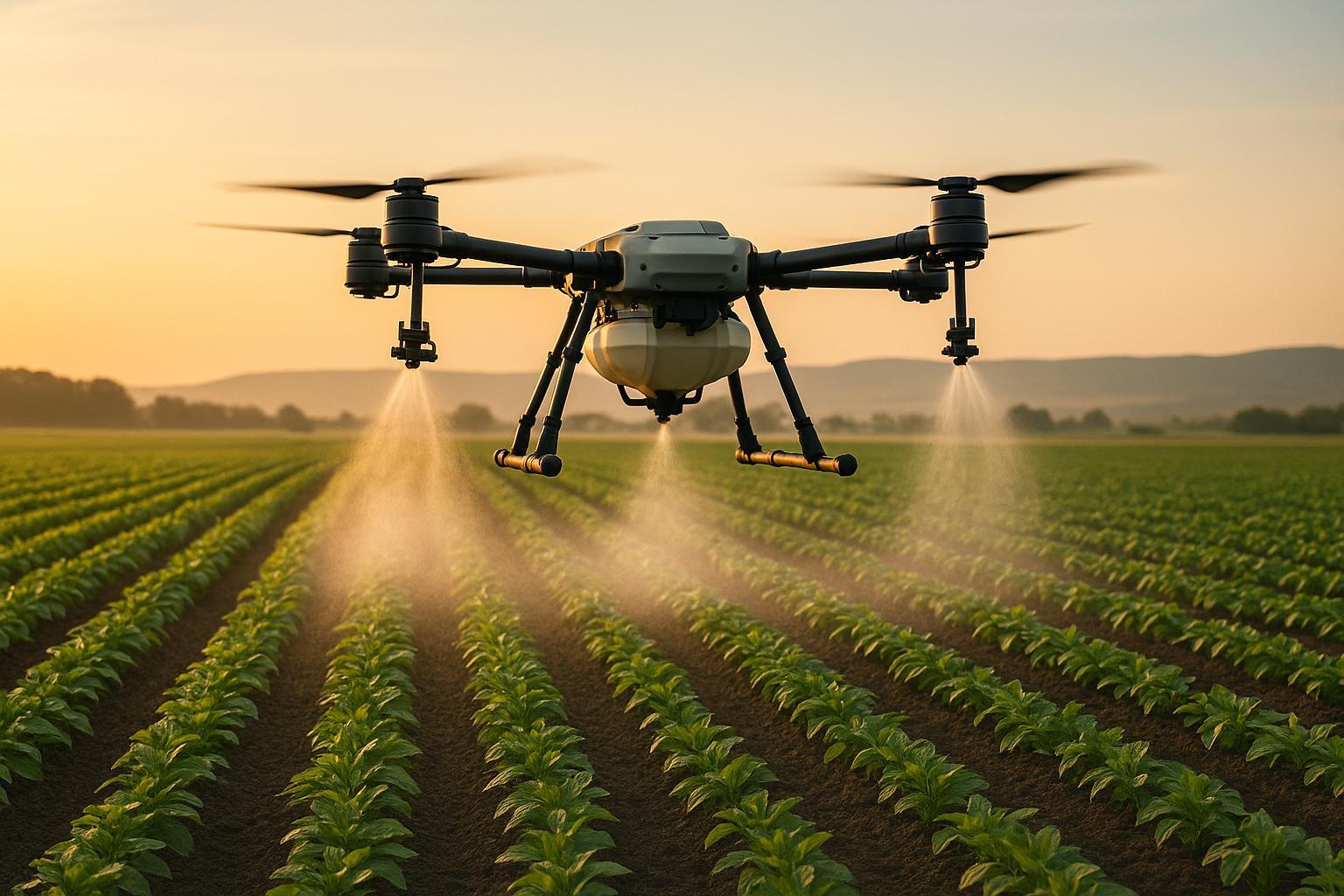
Precision Spraying: AI Drift Reduction Tips
Explore how AI technology enhances precision spraying in agriculture, reducing pesticide drift and improving efficiency for sustainable farming.
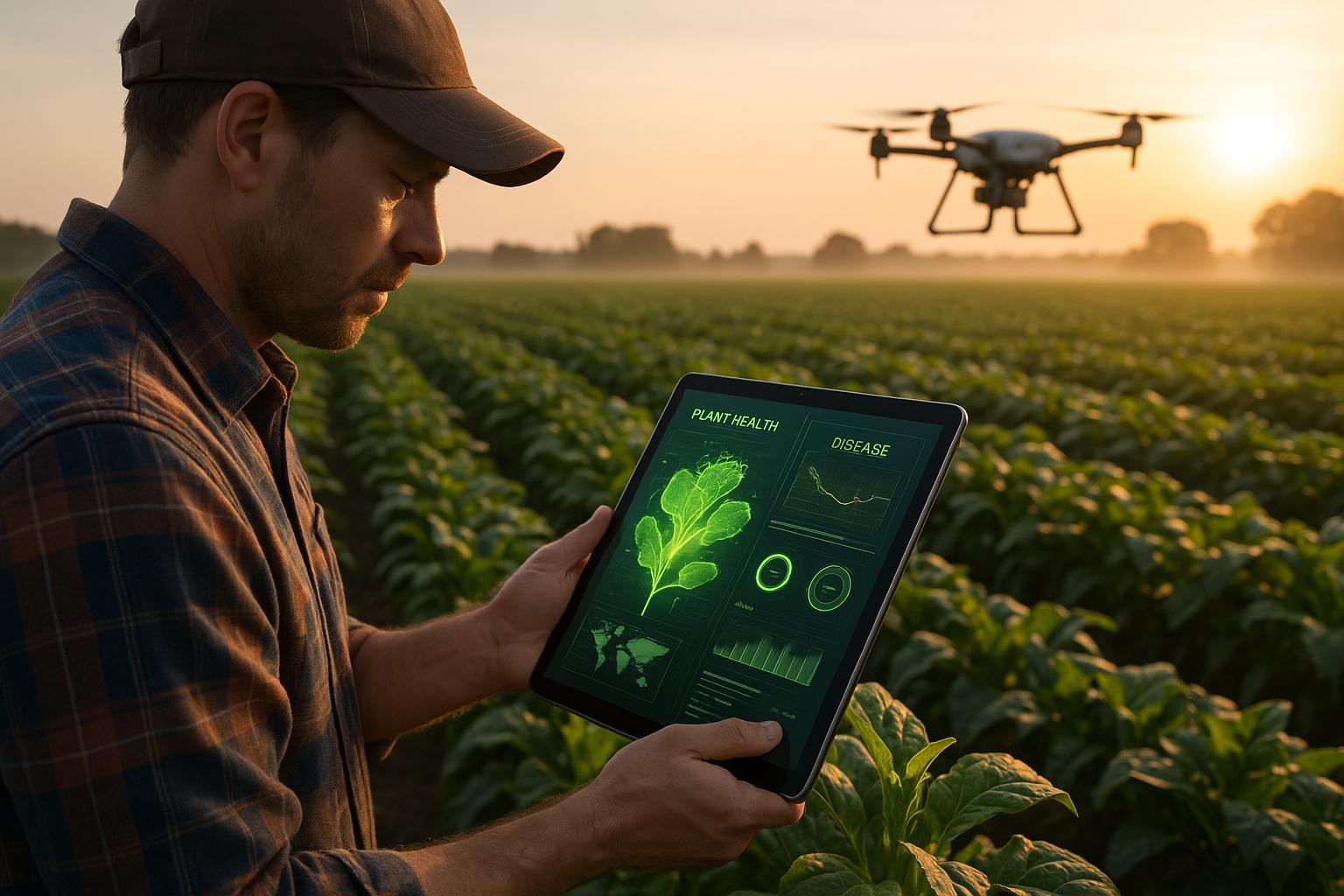
AI Tools for Predicting Plant Disease Outbreaks
AI tools are revolutionizing crop protection by predicting plant diseases accurately and helping farmers increase yields while minimizing pesticide use.
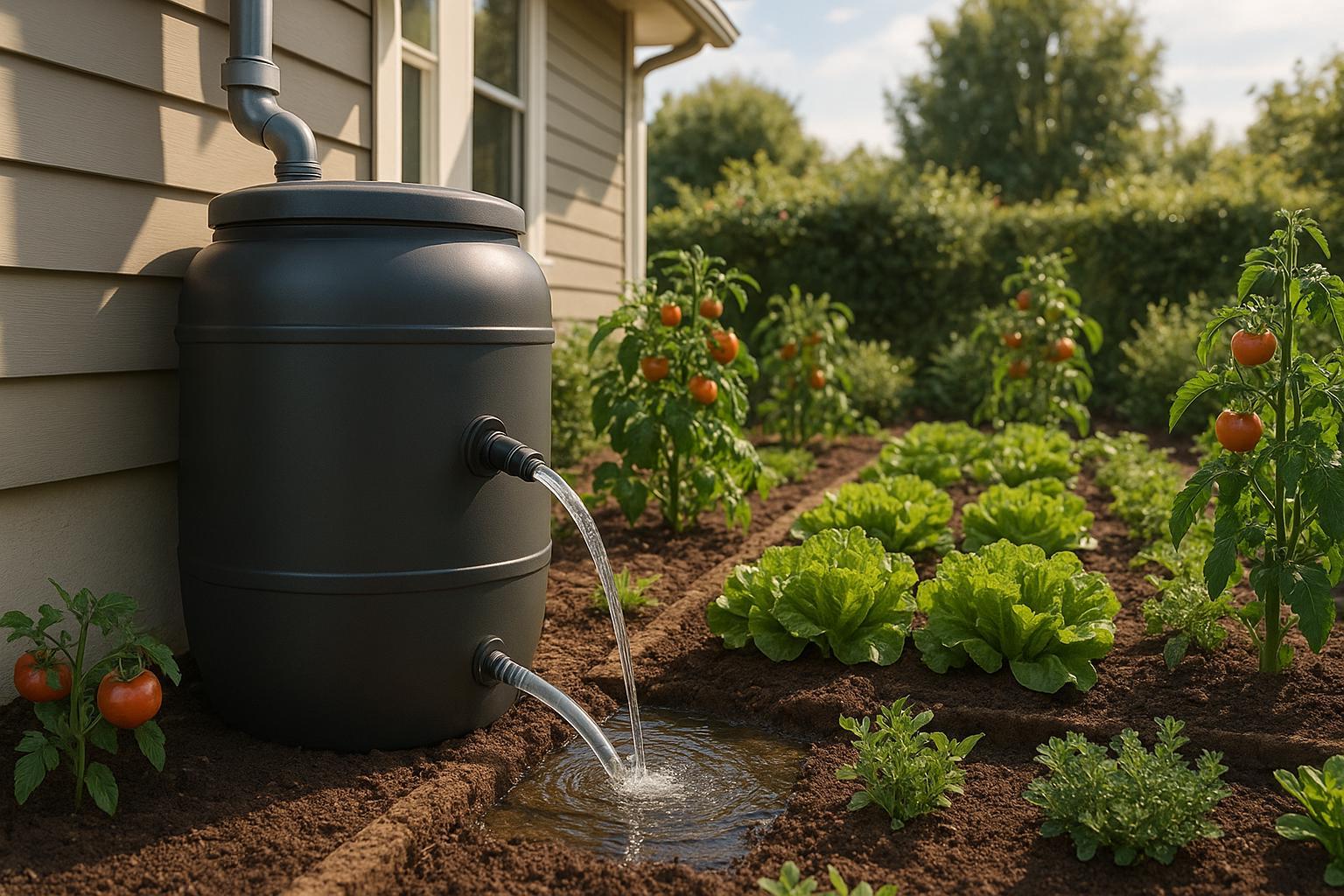
Ultimate Guide to Rainwater Filtration for Gardens
Learn how to implement an effective rainwater filtration system for your garden, enhancing plant growth while conserving water and reducing costs.

Understanding Garden Zones in Iowa: Importance and Factors to Consider
Learn about the garden zones in Iowa and how to determine your garden zone. Discover the importance of knowing your garden zone and the factors that affect it.
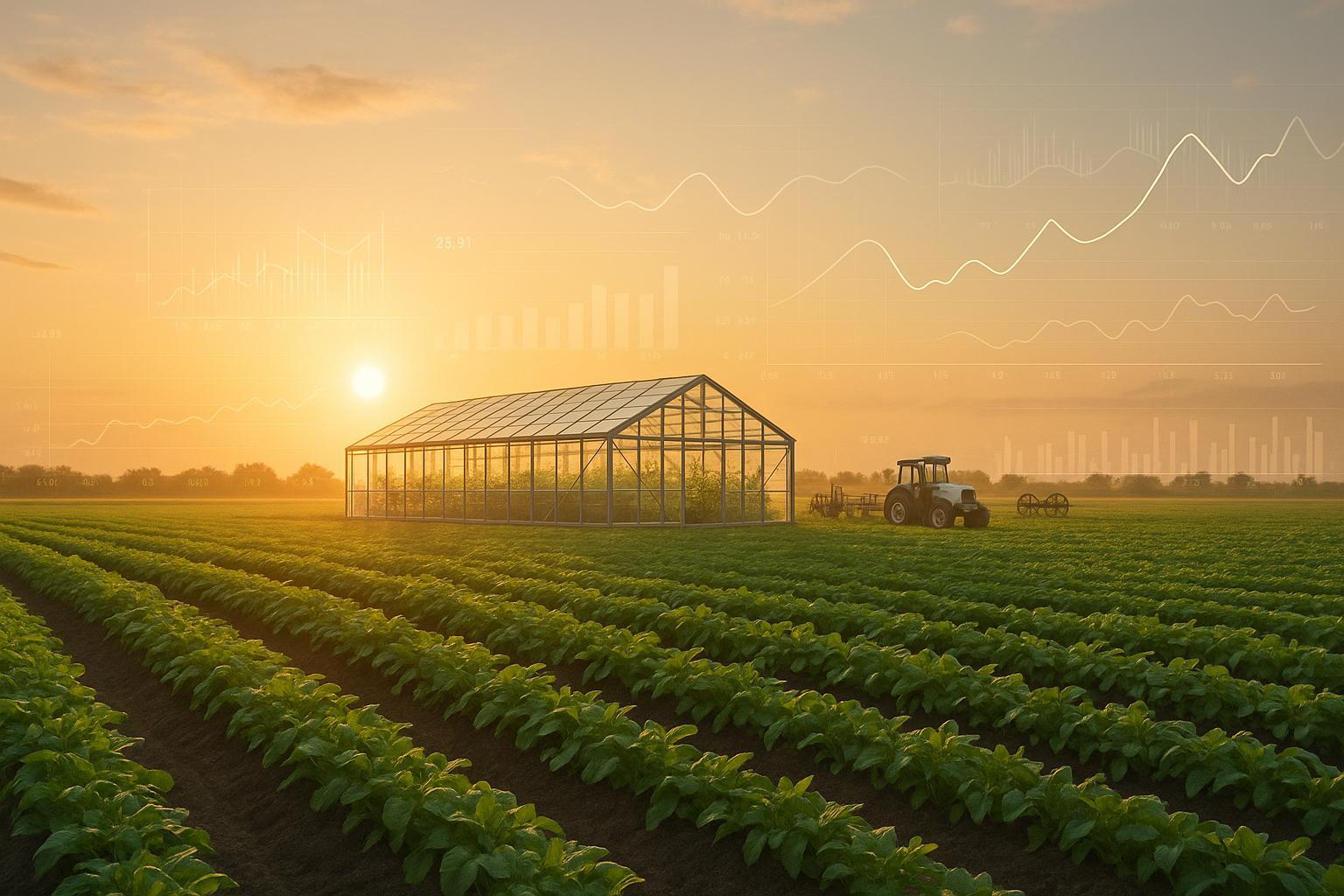
How Machine Learning Models Forecast Plant Growth
Explore how machine learning revolutionizes plant growth predictions, optimizing resources and improving yields for farmers and gardeners alike.
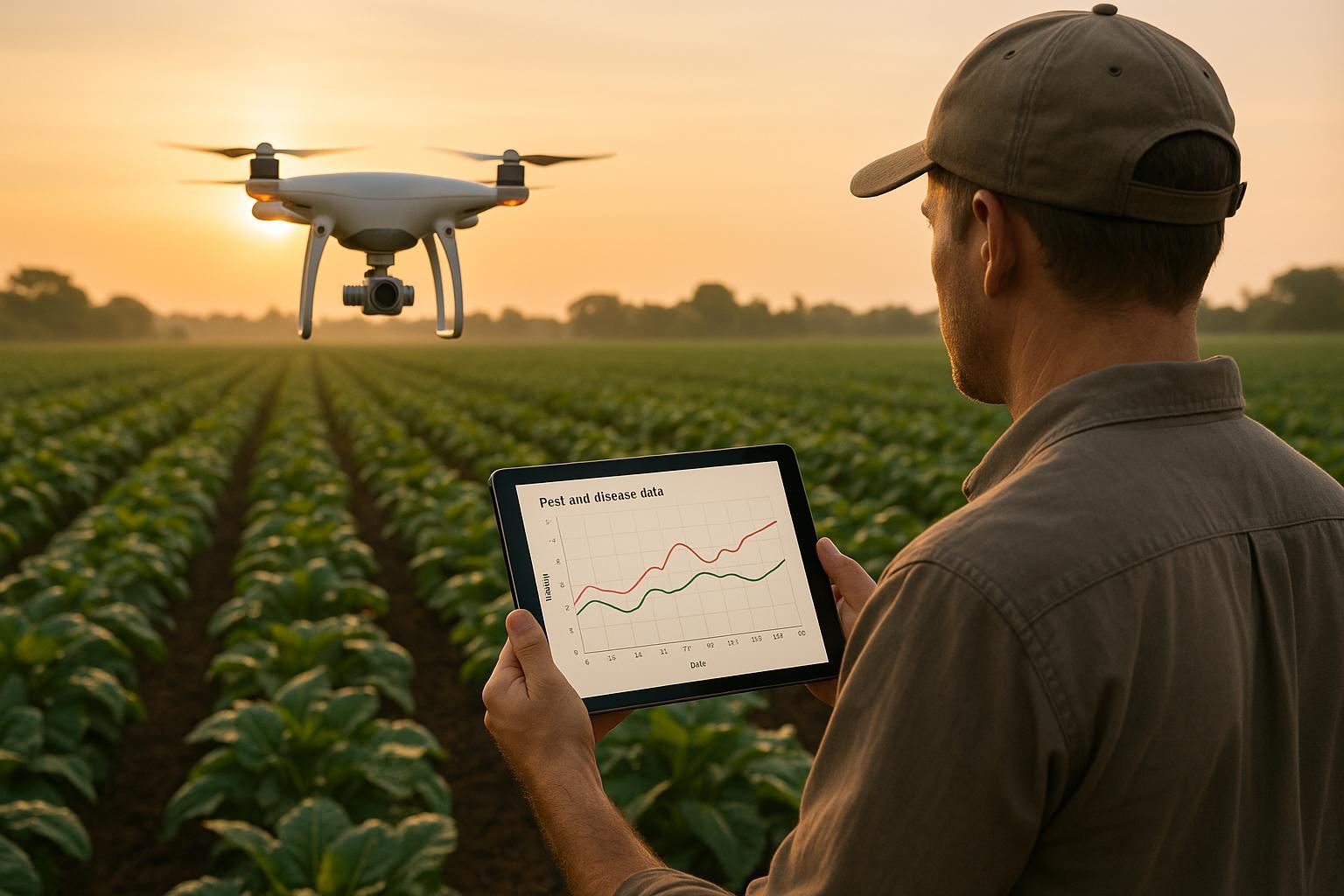
Top 7 AI Tools for Pest and Disease Management
Explore how AI tools are revolutionizing pest and disease management in agriculture, enhancing efficiency and sustainability for farmers and gardeners.